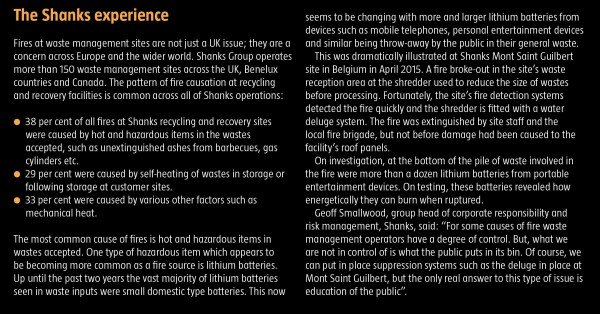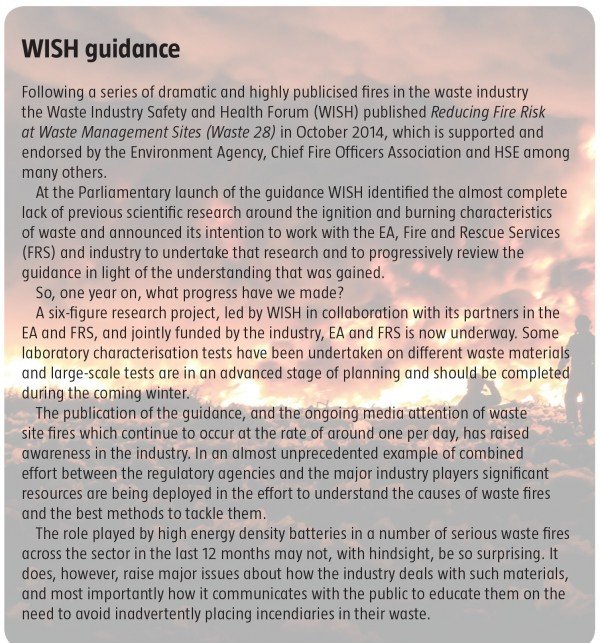
Fire crews tackle the huge blaze at Jayplas recycling plant in Smethwick. Photo: West Midlands Fire Service
In recent years, waste recovery companies have seen an increase in lithium-ion batteries, which present a significant fire safety risk. Chris Jones explains why.
Lithium-ion (Li-ion) batteries have become an indispensable part of everyday life since their initial commercialisation in the 1990s.
Subsequent technological advancements in composition and production have meant that Li-ion batteries are present in many everyday objects from mobile phones and laptops to robotic hoovers and remote control cars.
They are also finding uses in much more power intensive applications such as electric vehicles and energy storage. It is widely forecast that society’s use of the Li-ion battery will almost certainly continue to grow for the foreseeable future.
However, along with all the benefits, the technology can deliver catastrophic failings. Li-ion batteries pose a genuine fire safety risk due to their flammable components and high energy density when subject to external forces or damage.
The most common failure of Li-ion batteries is through ‘thermal runaway’, when chemical reactions within the battery result in substantial heating of the battery cell and therefore accelerate chemical reactions causing more heating (up to 900°C).
This process has even been demonstrated on TV by survivalist Bear Grylls, who revealed how to use a Li-ion battery from a mobile phone as a pocket firework in a survival scenario.
In order to prevent such cataclysmic failings occurring on a daily basis, manufacturers segregate and store Li-ion batteries in protective materials such as bubble wrap or metal casings to reduce the risk of mechanical abuse resulting in fires.
Despite these efforts, there have been many reported incidences of Li-ion battery failures, which have resulted in thermal runaway – with many well-documented examples showcasing spontaneous combustion.
When appliances, or their Li-ion batteries, reach the end of their useful life they are often recycled incorrectly or disposed of in municipal waste. This creates great difficulty for the recycling industry as detection and separation of Li-ion batteries is searching for the proverbial needle in the haystack.
Unfortunately, there appears to be no proven ‘off the shelf’ method for detection and separation of Li-ion batteries in waste and therefore the waste industry is entering uncharted territory.
Once within the recovery and recycling system, processing often involves heavy machinery and high physical impacts such as shredding, leading to significant potential for mechanical damage and subsequent thermal runaway of any
Li-ion batteries present and consequently a scorching fire. The presence of other combustible material in the system leads to the prospect of Li-ion battery fires initiating greater secondary waste fires, which are potentially putting lives at risk and causing damage to facilities.
In order to manage the risk of Li-ion battery-induced fires across the recycling industry it is imperative that we look to a multi-strand approach, working with the battery manufacturers, product users and the recycling industry.
Product designers need to enhance the identification and safety of their products, while increasing communications will look to heighten the public awareness of the impacts of incorrectly segregating waste. The recycling sector can focus on enhancing its technology offerings to identify prohibitive items in waste streams.
Chris Jones is chair of the Waste Industry Safety & Health Forum (WISH)
WISH has issued guidance below. Also, see below for examples of where lithium batteries have caused significant problems



